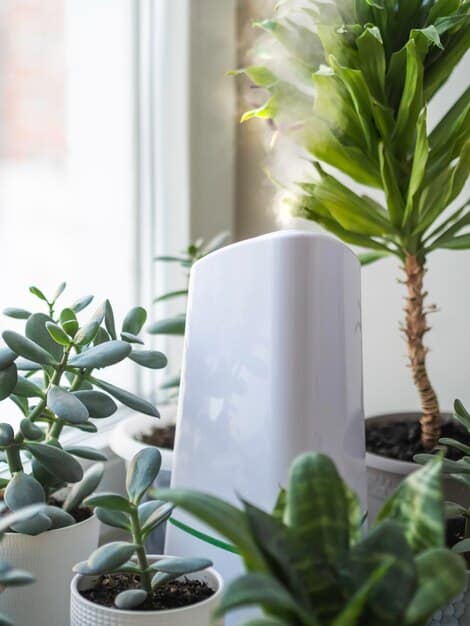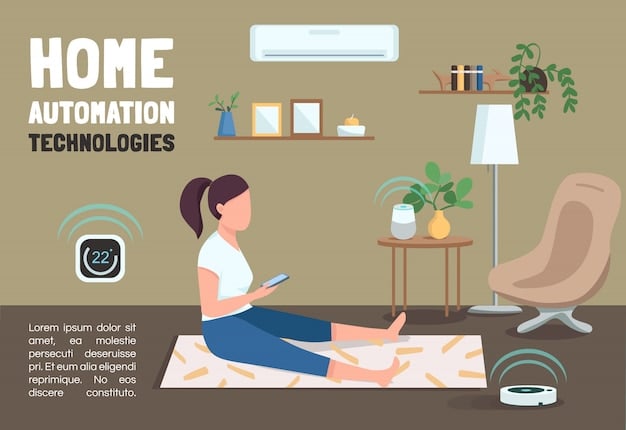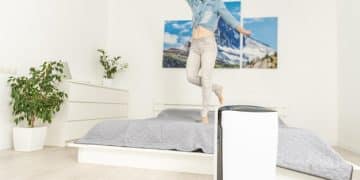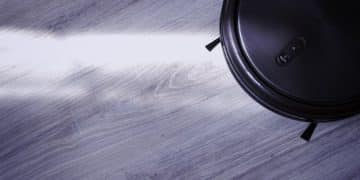Air Purifier Allergy Test: Does It Eliminate 99.97% of Allergens?

This scientific review investigates the effectiveness of new air purifiers claiming to eliminate 99.97% of allergens, examining the underlying technology, testing methodologies, and real-world performance to determine if these devices truly deliver on their promises for allergy sufferers.
Are you tired of battling allergies indoors? Many new air purifiers boast they can eliminate 99.97% of allergens. This review, Does This New Air Purifier Really Eliminate 99.97% of Allergens? A Scientific Review, dives deep to find out if they live up to the hype.
Understanding Air Purifier Technology and Allergen Removal
Air purifiers have become increasingly popular, promising cleaner and healthier indoor air. But how do they actually work, and what does that 99.97% claim really mean? Let’s explore the core technology behind these devices and their effectiveness in targeting common allergens.
HEPA Filters: The Gold Standard
Many air purifiers rely on High-Efficiency Particulate Air (HEPA) filters. These filters consist of a dense mesh of fibers designed to trap microscopic particles as air passes through them.
Beyond HEPA: Additional Filtration Methods
Some air purifiers incorporate additional filtration methods, such as activated carbon filters or UV-C lamps, to address different types of pollutants like odors or bacteria.
- HEPA filters trap particles: Including dust, pollen, pet dander, and mold spores.
- Activated carbon filters absorb gases and odors: Offering a more complete air purification solution.
- UV-C light helps kill microorganisms: Like bacteria and viruses, although its effectiveness varies.
The effectiveness of an air purifier in removing allergens depends on several factors, including the size and type of filter, the airflow rate, and the size of the room. Understanding these factors is crucial for making an informed purchase decision.
Decoding the 99.97% Allergen Removal Claim
The “99.97% allergen removal” claim is a common marketing tactic, but what exactly does it mean? It’s essential to understand the testing conditions and limitations behind this number to avoid misleading expectations.
Standard Testing Procedures
Air purifier manufacturers often cite results from standardized tests, typically conducted in controlled laboratory environments. These tests measure the filter’s efficiency in capturing particles of a specific size.
Particle Size Matters
The size of the particles tested is crucial. The 99.97% claim usually refers to particles 0.3 microns in diameter, which is considered the most penetrating particle size (MPPS). However, many allergens are larger or smaller than this size.

It’s important to remember that real-world conditions differ significantly from laboratory settings. Factors like room size, airflow, and the presence of other sources of pollution can affect an air purifier’s actual performance.
Scientific Studies on Air Purifier Effectiveness for Allergies
Beyond marketing claims, what does the scientific literature say about the effectiveness of air purifiers in alleviating allergy symptoms? Let’s examine some studies that have investigated the real-world impact of these devices.
Research Findings on Symptom Reduction
Some studies have shown that using air purifiers can lead to a reduction in allergy symptoms, such as sneezing, runny nose, and itchy eyes. However, the results vary depending on the type of air purifier and the severity of the allergies.
Impact on Indoor Air Quality
Research also indicates that air purifiers can improve indoor air quality by reducing the concentration of airborne allergens. This can be particularly beneficial in homes with pets or individuals with dust mite allergies.
- Studies show symptom reduction: Air purifiers can help reduce sneezing and itchy eyes.
- Improved air quality: Air purifiers can lower allergen levels.
- Variable results: Effectiveness depends on the purifier and allergy severity.
While scientific evidence supports the potential benefits of air purifiers for allergy sufferers, it’s crucial to consider the limitations of these studies and choose a device that is appropriate for your specific needs.
Factors Influencing Air Purifier Performance in Real-World Settings
The performance of an air purifier can be significantly affected by various factors present in real-world environments. Understanding these influences is important for optimizing the device’s effectiveness.
Room Size and Airflow
The size of the room and the air purifier’s Clean Air Delivery Rate (CADR) are crucial considerations. An air purifier with a low CADR may not be effective in a large room.
Placement and Usage Habits
The placement of the air purifier and usage habits also play a role. Placing the device in a location where it can effectively circulate air throughout the room is essential.

Factors like window openings, the presence of pets, and the level of outdoor pollution can all influence the performance of an air purifier. Regular filter maintenance is also essential for maintaining its effectiveness.
Comparative Analysis of Popular Air Purifier Models
With so many air purifiers on the market, it can be challenging to choose the right one. Let’s compare some popular models based on their features, performance, and scientific testing data.
Evaluating Different Features and Technologies
Different air purifiers offer various features, such as HEPA filters, activated carbon filters, UV-C lamps, and smart controls. It’s important to evaluate these features based on your specific needs and priorities.
Analyzing Performance Metrics
Analyzing performance metrics, such as CADR, filter efficiency, and energy consumption, can help you compare different models. Look for air purifiers that have been independently tested and certified.
- Consider your needs: Choose based on allergen type and room size.
- Compare features: Evaluate HEPA, carbon filters, and UV-C lamps.
- Check performance: Look for CADR and energy efficiency ratings.
By comparing different air purifier models, you can make an informed decision and select the device that is best suited for your home and allergy concerns. Remember to read user reviews and consult with experts if you have any questions.
Optimizing Air Purifier Use for Maximum Allergy Relief
Even the best air purifier may not provide optimal allergy relief if it’s not used correctly. Here are some tips for maximizing the effectiveness of your air purifier.
Proper Filter Maintenance
Regularly clean or replace the filters according to the manufacturer’s instructions. A clogged filter can reduce the air purifier’s airflow and efficiency.
Strategic Placement and Operation
Place the air purifier in a central location and run it continuously, especially during peak allergy seasons. Close windows and doors to minimize the influx of outdoor allergens.
Combine air purifier use with other allergy management strategies, such as regular cleaning, allergen-proof bedding, and medication, for comprehensive relief.
| Key Point | Brief Description |
|---|---|
| 💨 HEPA Filters | Capture 99.97% of particles at 0.3 microns. |
| 🔬 Scientific Studies | Show air purifiers can reduce allergy symptoms. |
| 📏 Room Size | CADR should match room size for effectiveness. |
| 🔄 Filter Maintenance | Clean or replace filters regularly for best performance. |
Frequently Asked Questions
▼
Air purifiers with HEPA filters are effective against particulate allergens like pollen, dust mites, and pet dander. However, they may not be as effective against gaseous pollutants or odors, which require activated carbon filters.
▼
The frequency of filter replacement depends on the type of filter and the level of air pollution in your home. Check the manufacturer’s recommendations and replace the filter as needed, typically every 3-6 months.
▼
While air purifiers can significantly reduce allergy symptoms, they may not completely eliminate them. For comprehensive allergy relief, combine air purifier use with other strategies like medication and allergen avoidance.
▼
CADR (Clean Air Delivery Rate) measures how quickly an air purifier cleans a room of a specific size. A higher CADR indicates better performance. Choose an air purifier with a CADR that is appropriate for your room size.
▼
Not necessarily. Expensive air purifiers may offer more features or a sleeker design, but their performance may not always be significantly better than more affordable models. Focus on features, CADR, and filter type.
Conclusion
While the claim that new air purifiers eliminate 99.97% of allergens should be viewed with a critical eye, scientific studies suggest that they can be effective tools for improving indoor air quality and reducing allergy symptoms. Choosing the right model and using it correctly can significantly enhance your indoor environment and provide much-needed relief.


![Is the updated [product] truly better? A deep dive into enhancements Is the updated [product] truly better? A deep dive into enhancements - Cover Image](https://youforyous.com/wp-content/uploads/2025/07/youforyous.com_4_1753831175_a20b5125_cover-360x180.jpg)


